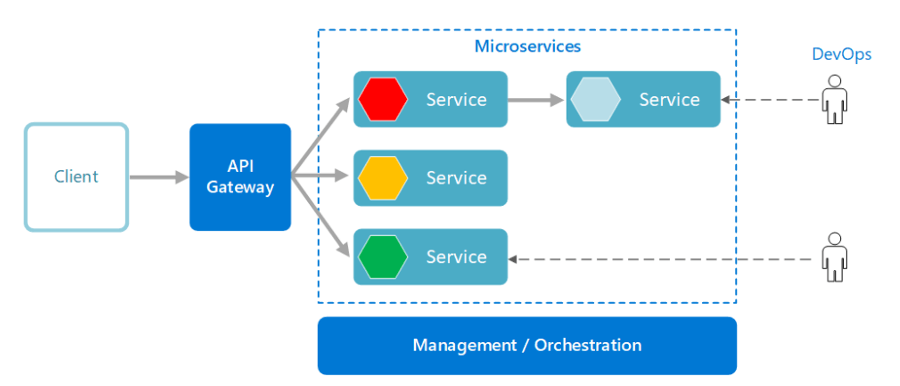What is Microservices?
Microservices is an architectural way of developing a single application into multiple services that can perform independently as separate services. Each of those services has its own process and communications with each other. As the name suggests microservices are lightweight independent services that are entirely automated to make the deployments much more straightforward.
Some of the advantages of microservices include different services that can have different databases and you can achieve modularity at both code and database levels. Microservices make it easy to develop, test and deploy without affecting the other services inside the application. Swift deployments and the quick feedback from them and revert instantly if the deployment fails are some other advantages. It provides much more flexibility in the parallel development as you are splitting your application to microservices, and your developers could also align to this accordingly. Horizontal scaling is effortless in microservices and can be managed effectively. Microservices also have some disadvantages. One such main disadvantage is the security. Even though there are so many approaches and tools available in the market to improve the security of the microservices architecture, the risks and vulnerabilities are also increasing in parallel. And this makes us concentrate more on security and I am planning to write a series of blogs on microservices security going forward. Please follow us if you are more concerned about setting up a strong and secured microservices architecture.

Microservices Security – An overview
The vast deployment of microservices in different cloud providers and/or data centres makes the infrastructure not only highly available but also increases the risk of losing the grip and managing security turns becomes challenging. Likewise, there are many services comprised of a microservices architecture, the many the services the many the communication points between those services that result in the risk of vulnerabilities while exposing the endpoints between the services. In addition to that, another common challenge we need to address is the Identity management and access control. We need to restrict the users, groups, any other devices, or APIs on many different levels like with container or pod level and in the server level and so on. When it comes to the data level security, in microservices there is a high possibility of sharing the data through different channels that might end up in breach sometimes. All these challenges and the rapid changes in the code and applications, and the increase in the number of deployments raise alarm for the need to strengthen the security.
Conclusion
All these challenges added up and turned out to be the major factor for the organisations to shift the adopt the latest technology of DevSecOps that makes us realise the importance of security in any process of development. As mentioned earlier in the blog, I will be creating more blogs around microservices security.
Follow me for more insightful blogs and information around Cloud, DevOps and Security!

